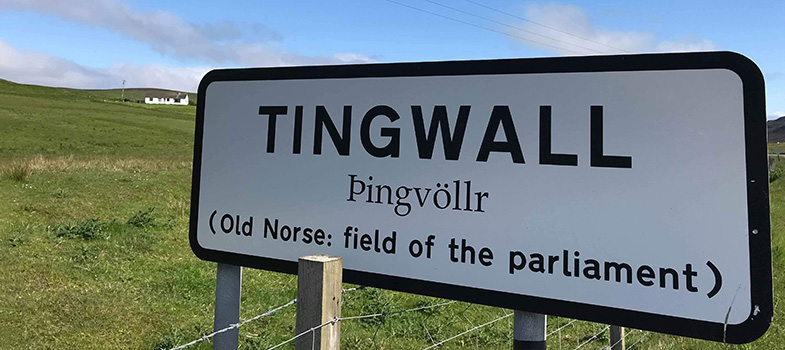10.1 McColl Millar’s Modern Scots
For those learners who wish to take their study of the Scots language further, we recommend a book Modern Scots: An Analytical Survey by Robert McColl Millar. Two quotes from this essential text assist in introducing the topic of Scots and work. In Millar’s chapter “The sociolinguistics of Scots” he states:
Most Scots speakers in Scotland live in urban areas, settlements with at least 50,000 inhabitants. Yet it is rural varieties which often receive the most attention. Why is this the case?
The first explanation is inherently linguistic. Scotland is not the only industrialised country where rural dialects are more different to and discrete from the standard variety employed in that region than are their urban equivalents. In Scotland, for instance, the use of [...] words like nicht [for] ‘night’ is now confined to rural districts (and there, largely to the speech of older people); this process of retreat for this feature from urban areas is relatively recent.
Scotland’s internal divisions are many, and the sociological studies of Scotland’s urban vs rural divisions are not studies to discuss in this course in any depth. Neither are they treated in-depth in Millar’s Modern Scots: An Analytical Survey. But it is, of course, an important detail, and Millar touches on it in his text, making an important observation for this discussion:
According to the prevailing views of the nineteenth century – strangely, not that different from those held by some influential groups in the early twenty-first century – the urban poor, dependent on charity or government assistance for their daily survival, were essentially responsible for their own ill fortune.
More worryingly (for the middle classes), working people in the cities became increasingly politicised during the period, moving inexorably to the political left.
Such a movement caused a reaction among many members of the middle classes, bringing about an association between the ‘ugly’ politics of ‘King Mob’ and their ‘ugly’ speech; these associations are likely to have made many of the newly enfranchised lower middle class emphasise their difference from the working classes (from which many of them had recently risen) through embracing Scottish Standard English.
Scots in its urban form therefore became a disparaged class-associated dialect.
Keep this quote and observation from Millar in mind as you continue through the rest of this chapter. The term “rural varieties” is often used instead of “dialects” and often does assist in an understanding of the Scots language as a whole. Rural varieties implies a distance from the centre or a distinctiveness from a common dominant, and it is possibly used most by Scots language activists who wish to show respect for those outside of the centre.But to repeat a line from the Millar quote above, “Scotland is not the only industrialised country where rural dialects are more different to and discrete from the standard variety employed in that region than are their urban equivalents.” (p. 192)
As you will have learned from the previous chapters in this course, and will continue to learn about as you carry on, the Scots language has suffered from a sustained period of low status, and those wishing to promote the language have had to face innumerable struggles: two of which are dialect diversity and the imposed associations that Scots is slang or even bad English. There will be a focus in this Scots and Work chapter on the language used in areas of Scotland which, at certain points in the history of these areas, have suffered from dreadful poverty.
The people themselves, living and working in these places of poverty, were therefore not only strong Scots speakers, but also of distinct dialects of Scots.
10. Introductory handsel
